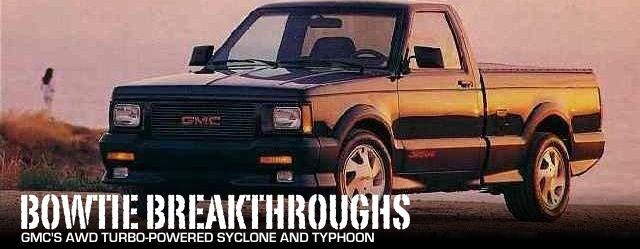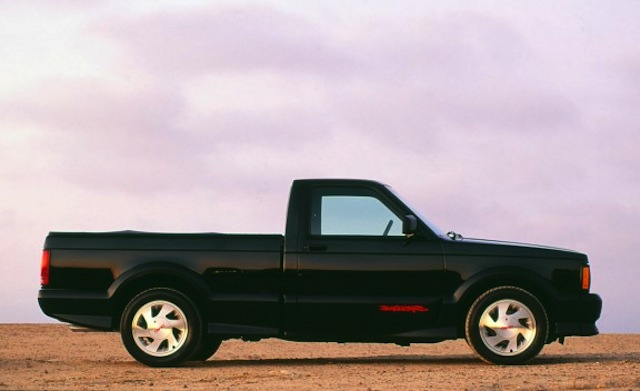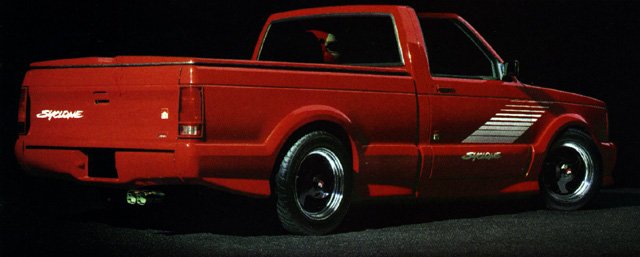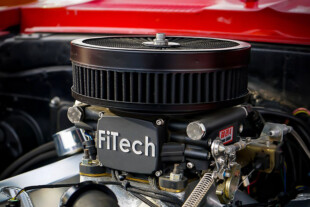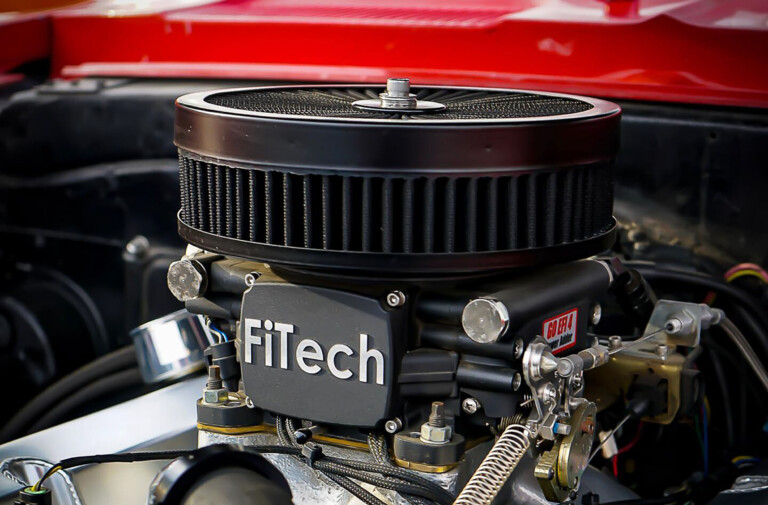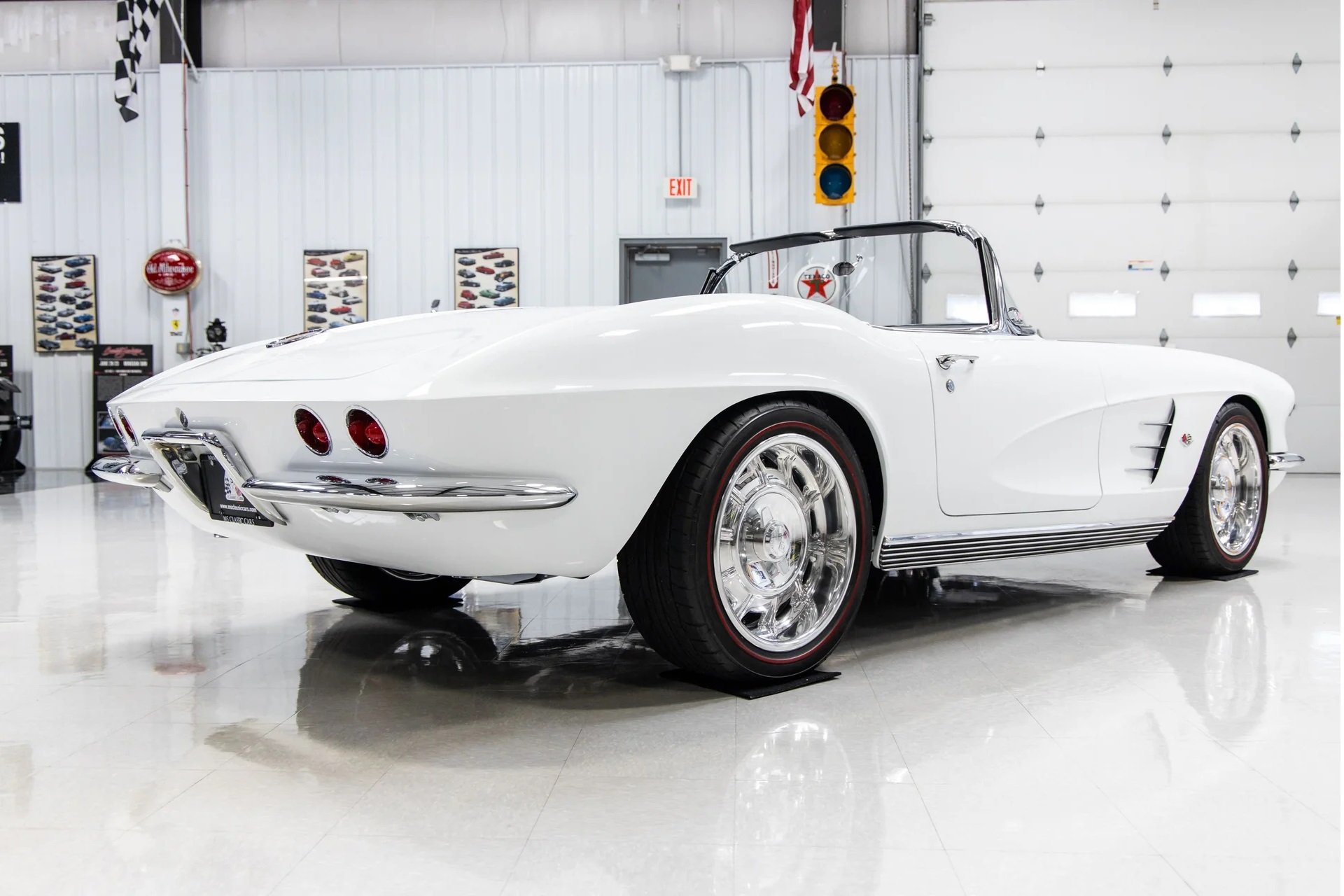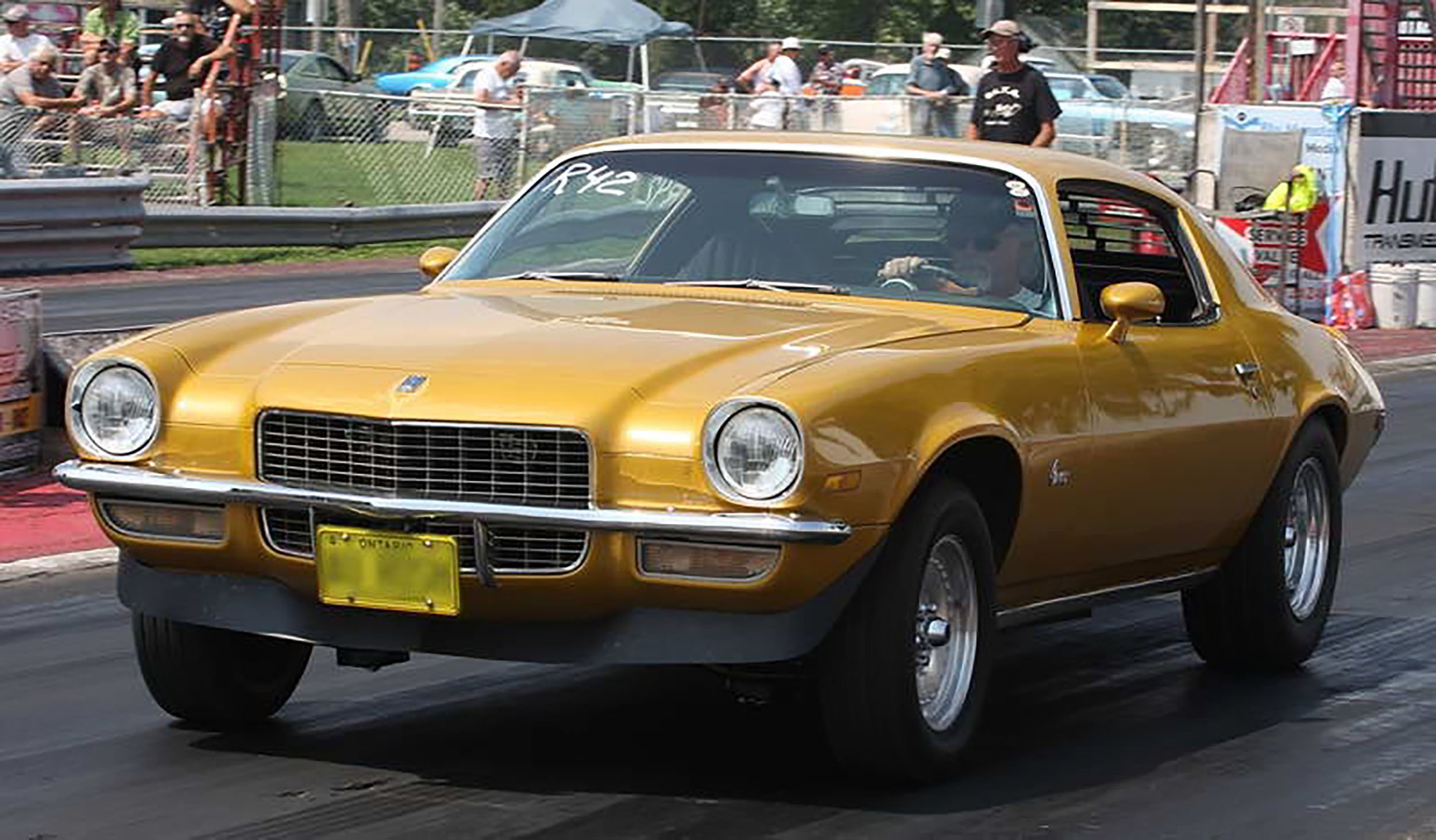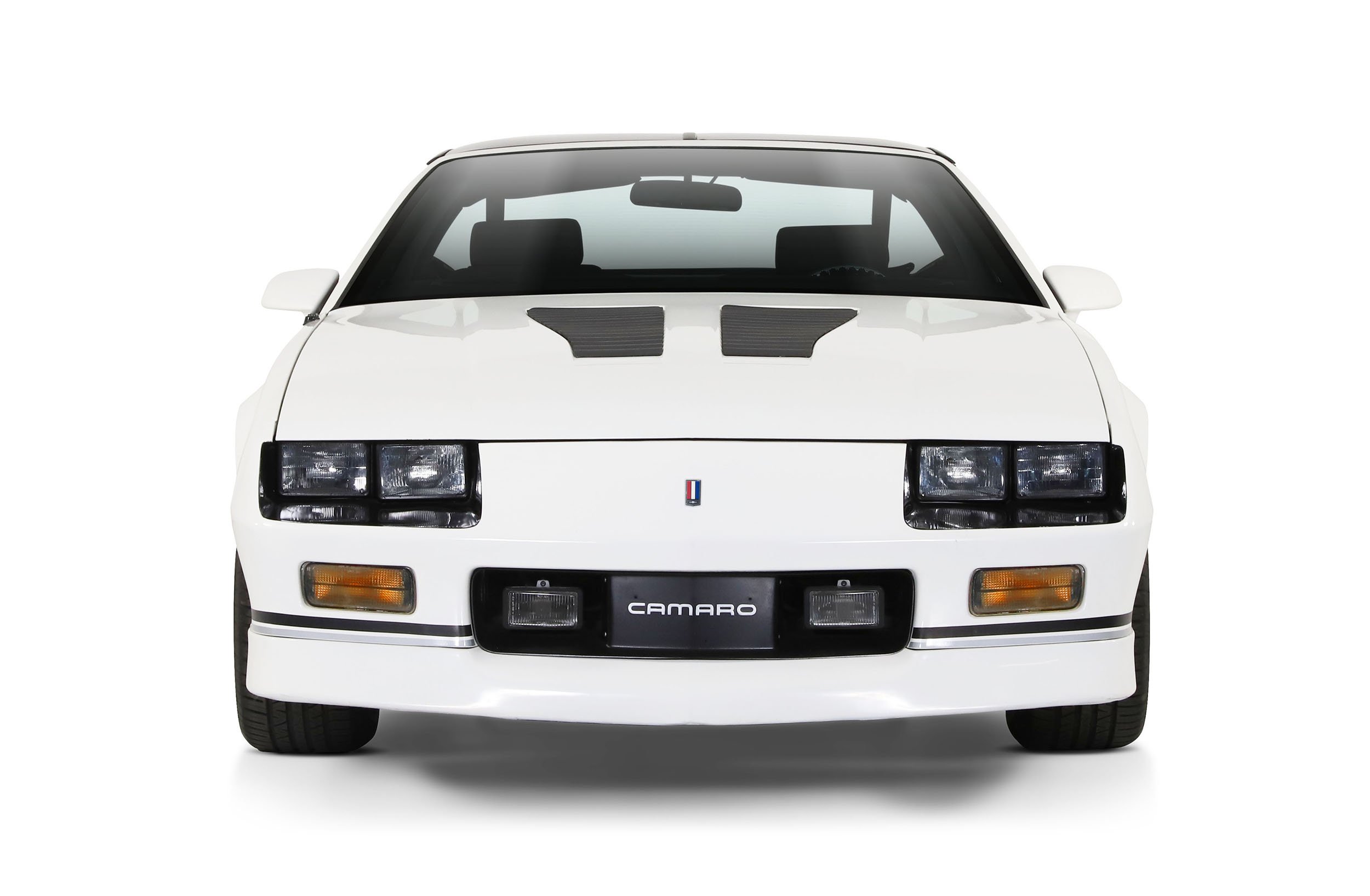If you were to get a group of gearheads in a room together to ask them what their favorite high-performance pickup truck of all time is, the most likely response you would get is either the Ford Lightning or Dodge SRT10 Ram. Ask the same group of guys what the baddest high- performance SUV is, and you’ll likely hear Trailblazer SS and the Jeep SRT8 Grand Cherokee.
 But if you’re quiet and listen to a handful of people in the back, you can hear them all chanting the same thing; the GMC Syclone pickup and Typhoon SUV. With these trucks dating back to the early ‘90s, some will argue they weren’t actually the first performance-enhanced sport trucks on the market, citing the Dodge Lil’ Red Express of ’78, the Shelby Dodge Dakota of ’89, and the Chevy C1500 454 SS of ’90 as the originals.
But if you’re quiet and listen to a handful of people in the back, you can hear them all chanting the same thing; the GMC Syclone pickup and Typhoon SUV. With these trucks dating back to the early ‘90s, some will argue they weren’t actually the first performance-enhanced sport trucks on the market, citing the Dodge Lil’ Red Express of ’78, the Shelby Dodge Dakota of ’89, and the Chevy C1500 454 SS of ’90 as the originals.
Fair enough, but where those trucks were built using mostly off the shelf parts and engines already in production, the GMC “SyTys” (as they’re often referred to) were purpose-built, full-on performance sport trucks that had been engineered from the ground up to take on full-bore exotic sports cars of the day.
Now granted, there were some components that were parts-bin issue. The body’s used for the SyTy twins were based of the freshly restyled Sonoma and Jimmy trucks of ’91, a body-style which in itself, dated back to 1982. The excellent gauge cluster in the dash was swiped from the ’90 Pontiac Sunbird Turbo GT of all things, and the all-wheel-drive system was also borrowed from the AWD Chevy Astro and GMC Safari minivans.
Now judging by those ingredients alone, it doesn’t sound like the SyTys didn’t have much to look forward to. But in order to tell this story properly, we’re going to have to go back in time to a couple of years earlier, where a handful of Buick engineers were still mourning the loss of their haloed Regal Grand National.
 By the early ‘90s, Buick had already helped Pontiac produce their now-legendary 20th Anniversary Turbo Trans Am, and they were pumping out all kinds of turbocharged Buick prototypes left and right, including Reattas, RWD-converted new Regals and even a wood grained Electra wagon. Eventually, Buick got bored tinkering with its own fleet, so it decided to grab a Chevy S-10 and dropped in their LC2 3.8L V6 between its fenders.
By the early ‘90s, Buick had already helped Pontiac produce their now-legendary 20th Anniversary Turbo Trans Am, and they were pumping out all kinds of turbocharged Buick prototypes left and right, including Reattas, RWD-converted new Regals and even a wood grained Electra wagon. Eventually, Buick got bored tinkering with its own fleet, so it decided to grab a Chevy S-10 and dropped in their LC2 3.8L V6 between its fenders.
The rear-wheel drive truck was painted all black, had “Grand National Intercooled” fender emblems, GN wheels, “BUICK” written on its tailgate, along with another Grand National badge in the lower left corner of the tailgate and another on the grille in place of where the Chevy bow tie used to sit. It even had a GN hood scoop grafted onto its hood with the infamous “3.8 SFI Turbo” emblems on the scoop.
Evidently, Buick missed the Grand National that much! But after being turned down to build the truck themselves, and after Chevrolet had been turned down for the idea since they already had their 454 SS truck in production, the idea was then proposed to GMC. Needless to say, GMC bit.
GMC then took the truck to a whole new level by making it all-wheel drive, also adding a very aggressive-looking ground-effects kit, and since the 3.8L Buick engine had required too much modification to fit into the Sonoma’s engine bay for an assembly line to bother with, the 4.3L Vortec engine was enlisted instead. General Motors, already having a good relationship standing with Performance Automotive Services (PAS) from their run of the 20th Anniversary T/A, led GMC to elect PAS to perform the conversion from Sonoma to Syclone.
 Starting with a decent powerplant already in the form of the 190hp LB4 Vortec V6, surprisingly, not much was done to the motor other than the obvious modifications such as the Mitsubishi TD06-17G turbo, a water-to-air intercooler, the intake manifold and exhaust manifolds, and a modified 48mm throttle body borrowed from the L98 Corvette.
Starting with a decent powerplant already in the form of the 190hp LB4 Vortec V6, surprisingly, not much was done to the motor other than the obvious modifications such as the Mitsubishi TD06-17G turbo, a water-to-air intercooler, the intake manifold and exhaust manifolds, and a modified 48mm throttle body borrowed from the L98 Corvette.
The only reinforcements made to the engine itself were heavy duty main caps, low-compression pistons, better head gaskets, and a much improved fuel system. The only transmission available was the 700R4 (aka 4L60) and that too, was borrowed from the Corvette.
The result of all of these goodies that came together produced 280hp and 350lb ft., and the lightweight truck was capable of 0-60 sprints in 4.6 seconds, along with ¼ times in the low-13s, making it one of the fastest vehicles on the road in 1991. In fact, Car and Driver compared it to the Ferrari flagship at the time; the 348, and the Syclone smoked it!
The Syclone made the boys at GMC so cocky; that they would brag about how the GMC was able to achieve the same performance times even in the wet, as the 35% front/65% rear balance of the all-wheel drive system helped in both traction and handling.
To complement the all-wheel drive system, the suspension was beefed up completely with thicker sway bars and stiffer shocks and springs. Exclusive 16×8-inch aluminum wheels shod with 245/50/16 Firestone Firehawk rubber at all four corners helped the Syclone corner through the bends. Although the brakes were a mix of disc brakes in the front and drums in the rear, the Syclone had 4-wheel ABS as standard equipment as well –enough to stop the truck from 60-0 in 116 ft. The downside to these chassis and suspension modification meant the Syclone had no off-road capability whatsoever; despite its all-wheel drive system. It only had load capacity of 500lb as well, so although it looked like a truck, it absolutely didn’t have any truck-like capabilities.
 After all was said and done, the truck proved to be popular in automotive circles, but with a $25,000 price tag in 1991 money, the 2,995 units and the supposed three ’92 models didn’t prove popular with the actual buying public.
After all was said and done, the truck proved to be popular in automotive circles, but with a $25,000 price tag in 1991 money, the 2,995 units and the supposed three ’92 models didn’t prove popular with the actual buying public.
In fact, one of the three produced for ’92 was used as a crash test vehicle, one other one ended up in a museum, and the third, a white one, belongs to a car dealer in Michigan. The original plan was to have the ’92 models offered in a wide array of colors, but since GMC had such a hard time unloading the ’91 models, that idea was scrapped.
However, a reported 113 were shipped to Saudi Arabia, nicknamed the Saudi Syclones. All of which had their Sunbird gauge clusters replaced by those from a standard S-10 with metric gauges, a leaded-fuel computer chip was installed to compliment the removal of the catalytic converter (a resonator went in its place) and all were sold throughout the Middle East and Europe.
This is why it is not uncommon to hear tales and watch videos of Syclones from across the pond, although it is reported that 31 of these eventually made their way back over to the States.
To add further history and trivia to our story; the Marlboro Tobacco Company bought ten Syclones, had them painted PPG “Hot Lick Red,” then shipped them to ASC (American Sunroof Corp.) for a targa top conversion, and then had them install a pair of Recaro seats with 5-point racing harnesses, along with a few performance upgrades, a CD changer, and a set of Boyd Coddington wheels. Each truck was given away for Marlboro’s promotional points-system giveaway that was popular in those days.
 But just because the Syclone was a sales failure in 1991 didn’t keep GMC from producing a Jimmy sport-utility based model for 1992 and 1993. The Typhoon as it was called was a mechanical twin to the Syclone. The only difference is, as they said, was the fact that two more of your friends could come along for the ride.
But just because the Syclone was a sales failure in 1991 didn’t keep GMC from producing a Jimmy sport-utility based model for 1992 and 1993. The Typhoon as it was called was a mechanical twin to the Syclone. The only difference is, as they said, was the fact that two more of your friends could come along for the ride.
As a result with the added weight over the pickup, the performance suffered -but only slightly. The Typhoon was a mid-13 second rocket ship out of the box and would still pull a 5 second 0-60 time. All Typhoons came with leather interior and a CD player was optional equipment along with keyless-entry.
Having learned from their mistakes with the Syclone, the price was kept right with a sticker of $30k and although it did cost $5,000 more than the Syclone, it made up for it by being an SUV. This made it more user friendly, and not to mention that it was sold during the beginning of the SUV craze of the ‘90s. The Typhoon was also available in a variety of colors, unlike the Syclone- which we imagine, also helped its popularity with the buying public.
The Typhoon was available only as a two-door, but it has been proven that at least two Typhoon prototypes were built based off of the four-door Bravada. PAS used these mules to pitch the product to both Oldsmobile and Cadillac, but neither was interested.
 The only way to spot the difference between the two model years of Typhoon besides the available colors was the removal of the plastic door handle guards from the ’93 models, as the ’92 Typhoons were the only SyTy to have them. Total production for Typhoons would result in 4,697 units (2,497 for ’92, 2,200 for ’93).
The only way to spot the difference between the two model years of Typhoon besides the available colors was the removal of the plastic door handle guards from the ’93 models, as the ’92 Typhoons were the only SyTy to have them. Total production for Typhoons would result in 4,697 units (2,497 for ’92, 2,200 for ’93).
GMC also produced a very limited-production pickup called the Sonoma GT for 1992, with all of the visual appeal but with none of the performance ingredients of the Syclone it mimicked. A total of 806 of these were made.
Here we are now, looking back 20 years later on these trucks, and the impact they left on the niche in the marketplace has yet to be forgotten. They are coveted by motor heads from all over the world, and they are highly valuable and collectible today. In fact, this author has always wanted one and hopes to add one to his “collection” someday. Someday..



